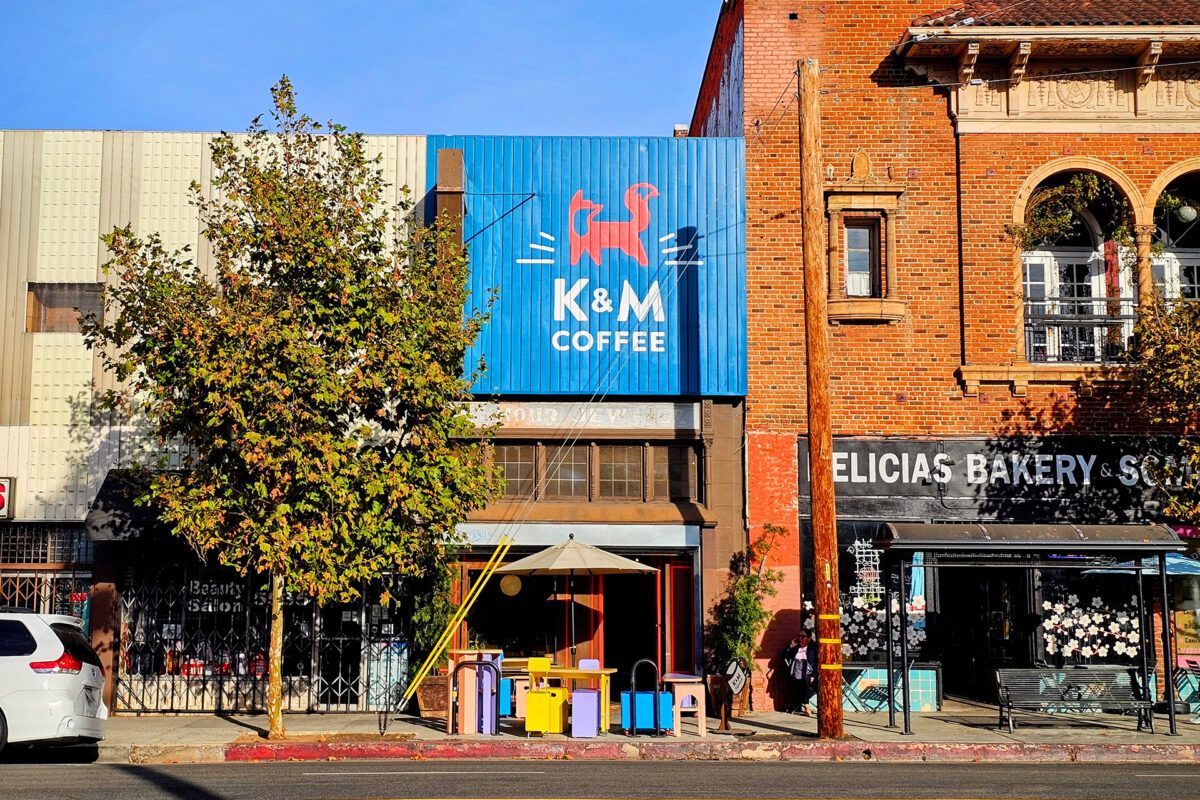As long as people had funds for documenting and the medium for this, there was painting signs.
IN One of the earliest textbooks about writing characters (1890), James Callingham writes: “Baker, which creates a shapeless loaf of bread, has satisfaction, knowing that he will soon be absorbed; But the work of the signature is mostly exposed to public opinion that it is worth carefully making letters so that the employer and employed can be satisfied, and the eye does not offend the work of the hand. ”
I examined the evolution of the dramatic roadside architecture, which doubled as advertising and neon signs, which were manually joined and steadfastly unchanged. But before and through all this there were signs painters.
As with the previous deep dives, the more I go into it, the more I see it around me and I wonder how I never examined his presence. Regardless of whether it is a basic “cafe” splashed on the side of the cafe, a menu that was carefully pulled out, or the opening hours of the zloty on the other side of the door, it is a technical form of art that remained and developed for centuries. It is so technical that sometimes you don’t realize that it is hand -painted.
Painting the sign comes from 300 BC With trade signs and at the end of the 19th century it was used in a enormous -scale advertising. “Matters were quite stable until the 19th century,” explains Arden Stern, design historian and Professor of humanities and science on Artcenter College of Design In Pasadena, California. “In fact, we see so many changes in design in various fields from industrialization and wider availability and accessibility of industrial materials in various fields.”
In cities, these signs are sprinkled in the city landscape: golden leaves address numbers in the windows of Pawęży, frame A, which attract you from the pavement and 30-meter faded advertising of family business companies protruding from brick walls. For the latter, those who painted them were called “Walldogs”, and the characters themselves are now “ghost signs”. Walldogs, named after the work like dogs and attached to the walls, traveled around American painting marks on buildings, silos, barns – basically wherever there were vertical real estate and people to see them. Enormous companies such as Coca-Cola (Over 16,000 painted Before the 1970s), and local family businesses employed Walldogs to paint advertising. It was a parallel advertising playground.
Spirit signs remain thanks to the huge amount of lead mixed with paint. Many were painted (after all, they were ads) or the buildings were demolished. In the 1960s, modern technologies such as computers and Vinyl and dying vinyl letters They were introduced, and President Lyndon Johnson signed the motorway beauty law to limit external advertising. Both cases were a blow to signing the painter’s work.
Currently renovated sense of recognition for these skills and art. There are Walldog groups around the world, they meet and run art. Personally, I can’t wrap my mind around the hand of the brush, perfectly writing without templates, backIn this way, every sign on the window or door (from the inside) would be made.
When it comes to learning, there are several different routes. Traditionally, you teach with an experienced painter and/or study at a commercial school. There is only one such school in the USA that teaches signs, and this is Los Angeles Trade-Technical Collegewhich has been teaching craftsmanship since 1924. Now they are self -taught painters, often with the background of art or design.
Abraham Mong He is a painter of self -taught signals based in Austin, muralist and neon, and also painted signs of drinking coffee smoking Barretta coffee to the magnificent 23k gold reverse letter Double troubles. “I was always interested in writing and established media, such as calligraphy and I was addicted to the city landscape,” he shares. His artistic journey began with the art of the art of painting, which led to painting, and in 2011 Neon Building. “Writing a sign is a working class art; I do it to pay bills. I just try to do it with class and originality. “He adds:” The best signs painters are really good technical artists. ”
Unlike wall paintings and images, it is sporadic that the signs have the artist’s signature. The project may come from other countries, but every painter of characters can apply their artistic style to it. Other ghost signs are whispers from the past, and some devoted people are working on maintaining history. For example American Sign Museum At Cincinnati, he has a huge archive of photos and books, and Craig Winslow in Winnipeg, Canada Used projected images To revive spirit signs in an artistic installation.
Restoration or maintenance is associated with your own set of social problems that encounter class and gentrification. “When we see cafes that have hand -painted marking, I see a relationship,” says Stern. “These are companies that can utilize various media, but are very specific to painting characters.” The employment of a local painter of signs is a mutual relationship between local companies and is a quick way to establish in the area.
Signs are a place marker, a testimony of everyday local companies that people visited, and according to them, respect is critical. “But on the other hand, I think it can be done in a really cynical way when you have enormous urban reconstruction programs,” explains Stern. Referring to examples of restoring signs used as markers “it was only a place in the vicinity”, Stern says that this tactic sounds “using the signature” you belong “only to having certain modern people.”
Restoration of the sign is a process that includes searching for ancient photos, receiving modern and guessing what was once, and referring to any documentation. “I have to get really tidy photos, and then I have to measure a lot, and then I redraw it to scaling,” he explains Joseph GiampinoA painter with a self -taught sign based in Raleigh, North Carolina. “I will rewrite the whole thing again, as it was originally done.”
Although he personally appreciates the worn appearance of ghost signs, he says that he would prefer to have someone like that-he is proud of his work and understands how to make a sign-a goodbye than someone who does not know what they are doing. Knowing the color that Coca-Cola has registered a trademark with paints available at that time, then translates it into a newfangled available paint. Restoration is not so much “restoring” in the same way as for the building. Basically, you paint a modern sign on the ancient one.
During the demolition stage of MO Marvailla, owner and founder Kindness and coffee pranks In Los Angeles he discovered the sign of the ghosts “Seymour Jewelers” under the aluminum siding of the cafe. “We stopped him because I fully believe in the preservation of the beauty of our history, while allowing it to integrate with our present and develop with us into the future,” he says. “I realized that the ghost sign made my shopping site a unique, and everything I had to do was properly design my store to honor the history of my building, while allowing my company to exist.” The raise in jewelry from 1925 may not be there, but its original sign is proudly located below the K&M coffee sign.

I asked the painters of the characters with whom I interviewed, why their clients choose hand -painted signs on vinyl, which is much cheaper. “My clients recognize quality over quantity,” says Giampino. “When people see a hand-painted sign-public, they don’t realize it-but they think it’s better.” Mong resembles the same sentiments and adds that vinyl is not doing well in the dizzying heat of Texas: “My best projects were made with such a great love and confidence of the patron. I believe in them and believe in me. ”
In this arrival of artificial intelligence, some crafts will remain intact. AI cannot bend and shape a neon, he cannot restore historical buildings, and certainly cannot rule the brush and paint the sign, not to mention the application of the golden leaf on the letter. Now I walk with modern recognition of all the labels, both faded and modern. Hand -painted signs have evolved from the need to advertise to invest in quality and place.
